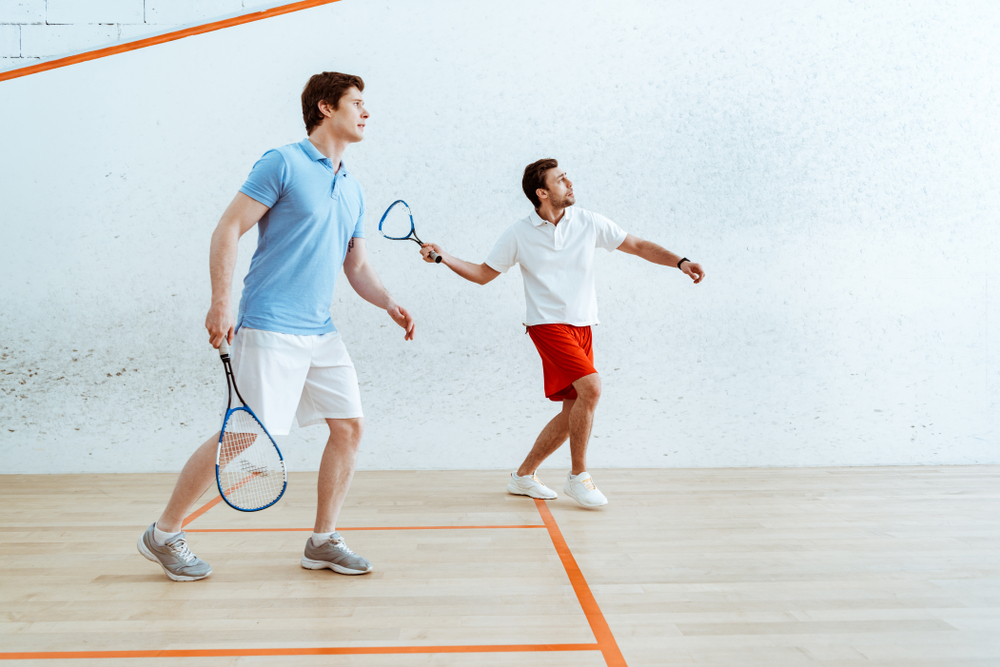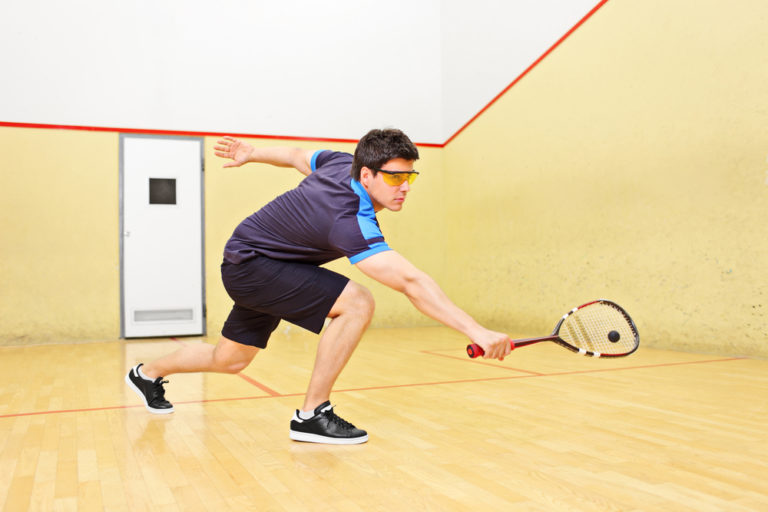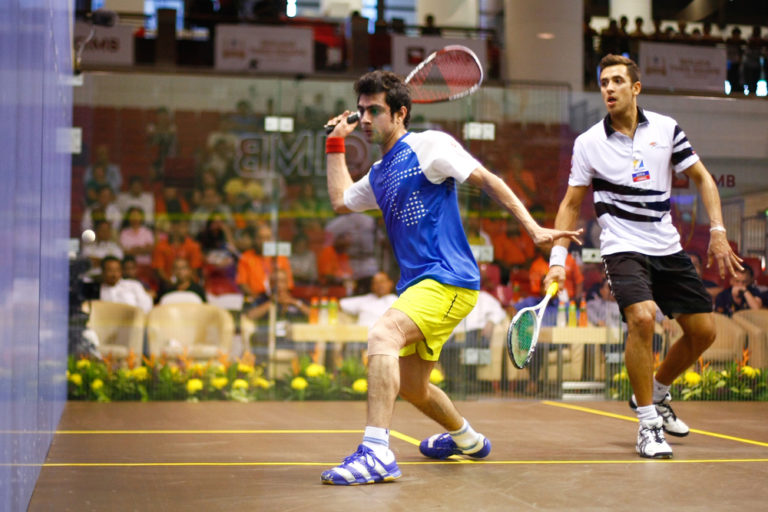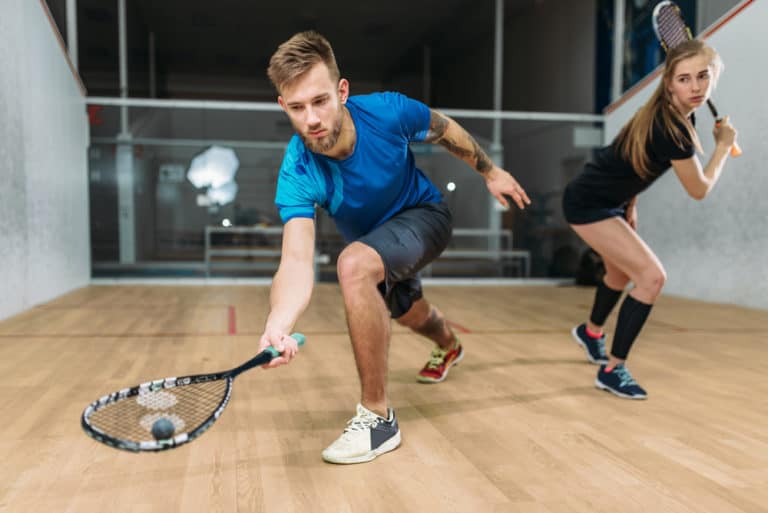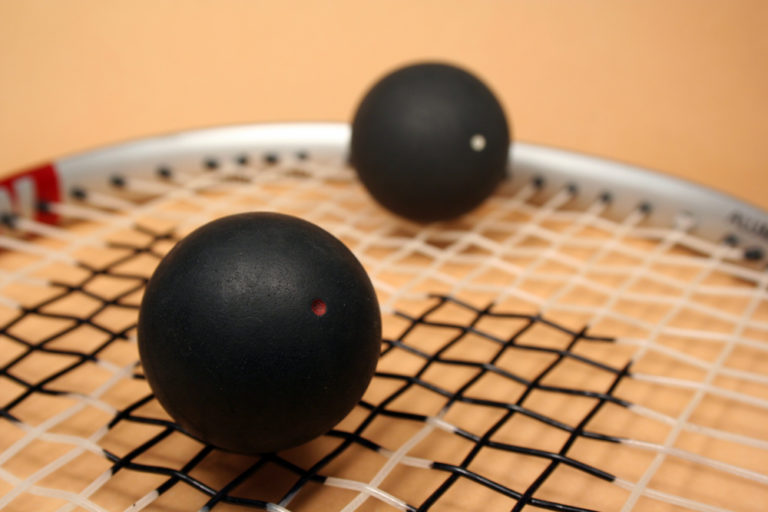Can Squash Serves Hit The Back Wall?
A square four-walled court is a reasonably constrained space, so the serve of the ball in squash may reach the back wall. Is this allowed? Why does a player try to hit the back wall during a serve? Will it cause any problems in the rally?
A squash serve is allowed to hit the back wall as long as it is in the opposite quarter of the court and does not hit the wall too high but within the boundaries of the court. It is common for players to hit the ball off the back wall as part of their serve, and makes it more challenging to return.
A squash serve is similar to the serve in other racket sports, such as tennis, and needs to land in the opponent’s quarter to be legal, the area between the side wall and the service box. Are there different ways to serve that will hit the back wall? Is it challenging to serve on the back wall? Does a serve that hits the back wall make it harder to return?
Why Can A Squash Serve Hit The Back Wall?
The squash has boundaries around the court’s box, including the back wall. When a squash serve hits the back wall below the boundary line, and within the opponent’s quarter of the court, it is allowed by the rules of squash. Sometimes, hitting the back wall in your serve can be an advantage and is considered a technique that gives a player an advantage.
The objective of squash is to hit the ball with your racket in such a way that the opponent can’t return it. By serving the ball from the front wall and then into the back wall, the server can gain an advantage over their opponents by the ball taking unpredictable bounces and changing direction, making it difficult to read the trajectory. Although the rules allow for a serve to hit the back wall within the boundaries, it takes a lot of control, skill, and precision, but if mastered can be a powerful tool for the server.
How Difficult Is It To Serve In Squash That Hits The Back Wall?
Hitting the back wall of the squash court from your serve is an advanced technique that powerful squash players use. However, performing a serve that hits the back wall can be challenging as it requires precision and power, for it needs to land in the opponent’s quarter to be legal.
Hitting the back wall with your serve is known as a “boast” or “rail,” and it requires a lot of skill and control. There are different techniques to ensure the efficacy of your serve that hits the back wall of the squash court; the player must hit the ball with a lot of pace and spin and aim for a specific spot on the back wall.
A player needs to practice often and do it repeatedly to perfect the serves that hit the back wall Repetition will help the player develop their racket skills and learn how to control the ball’s trajectory and spin. To add to the complexity of the serve that hits the back wall, a player needs to know how to read the court and anticipate their opponent’s movements. Therefore the boast or rail serves take many hours of practice to use effectively in a game situation.
How To Insure Your Squash Serve Hits The Back Wall?
As already discussed, practice is the key to improving your serve and assisting in the serve hitting the back wall, thus becoming more difficult to return or control and allowing for the server’s advantage. Some specific tips can help you focus when developing and fine-tuning your squash serve.
Aim Your Squash Serve To Hit The Back Wall
The first tip is to practice and improve your aim. Focus on a specific spot on the back wall when aiming to hit your serve onto the back wall. You want to aim for an area that would be the most challenging to return, for example, a spot about the waist or chest height. Practicing your aim will give you more control over the direction and angle of the ball’s bounce.
Use Spin On Your Squash Serve To Hit The Back Wall
A good tip to ensure your serve hits the back wall is to add spin, making it more complex; you can gain spin on the ball by snapping your wrist or back-swinging the squash racket. When the serve has spin added, it will help the ball stay low and close to the wall, making it more challenging to return.
Pace Of Your Squash Serve To Hit The Back Wall
If you need your serve to hit the back wall, it is essential to hit the ball with pace; it is understandable that the faster the ball moves, the further it will go. Therefore, you need to focus on using fast, explosive strokes to your serve with power. Using more force will require you to practice your aiming shots; repetition is essential to perfection to ensure accuracy.
Practice Pace And Spin On Squash Serve To Hitting The Back Wall
All the tips to ensure your serve is perfect and hitting the back require you to practice swinging and keeping your eye on the ball as you strike it. In your practice time, you can try different spots on the wall and do some experimentation. For example, you can try additional spins and paces for the most effective serves that work for you.
Where Is The Best Place For A Squash Serve To Hit The Back Wall?
When you are serving in squash, and your intention is for your serve to reach the back wall, you may wonder where is the best place to practice and how you can serve a ball that is more difficult to return. The height of your serve is essential; you want it to be between waist and chest height. You will have more control over the angle of the ball and direction if you hit it at this height.
Aiming for the corners is also a great idea to make it more challenging, of course, whichever corner is the receiving quarter. The pace and height of the serve will be the most crucial thing to get right to ensure the serve is both legal and challenging to return.
Is It Easy To Return A Squash Serve That Hits The Back Wall?
A squash serve can reach the back wall; it adds complexity to the serve, making it more challenging to return. When the serve has lots of pace and spin added, it makes it more difficult, as reading the serve to return it successfully will be a bit more unpredictable. It will not be a case of anticipating a serve that lands from the front wall into the opponent’s quarter, but a case where trajectory could change with unpredictable bounces off the back wall.
It will be essential for an opponent needing to return a serve that hits the back wall to have excellent court awareness and racket skills. They may need to adjust their body position and stroke midway to return the serve successfully. Good footwork is also a consideration when wanting to return a complicated serve.
There are more challenging and simpler ones; the server’s skill will dictate the serves complexity. For example, even though the serve is hitting the back wall might not be too difficult to return if it is too high and slow and gives more time for the opponent to read and adjust themselves for the return. The complexity of returning the serve will depend on several factors, but most importantly is based on each player’s skill level.
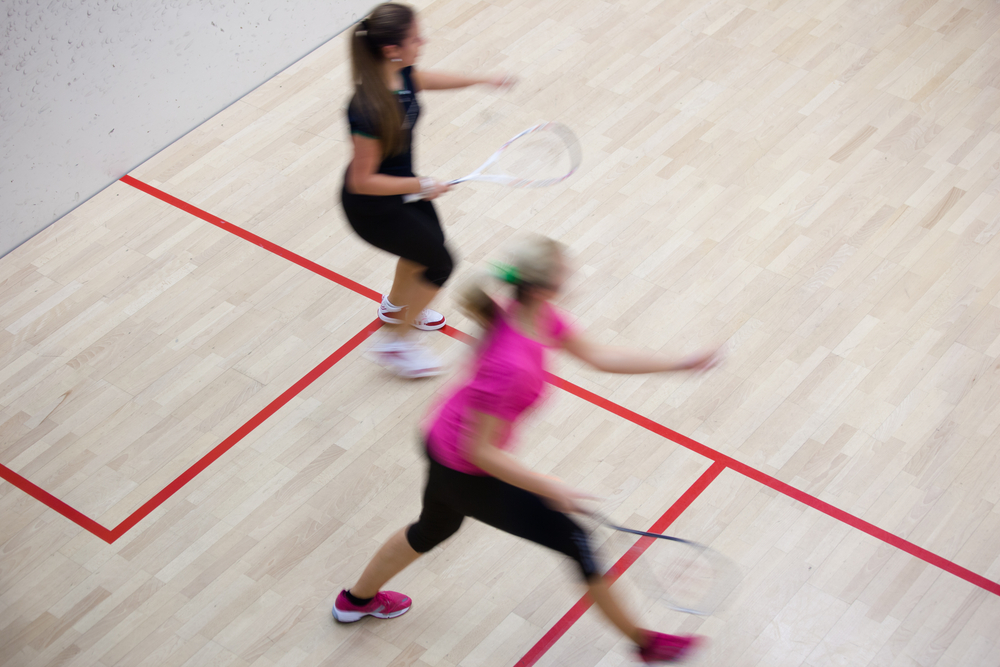
Are There Different Types Of Squash Serves That Hit The Back Wall?
One can practice several types of serves that hit the back wall and allow for varying tactics. By changing your serve and practicing, you can keep the opponents guessing and gain an advantage with your serve.
Boast Serve Hitting The Back Wall
In your serve, you are already aiming for the back wall to add complexity, and we call this the boast serve when it bounces off a wall before hitting the ground. The regular boast serve would be a serve that hits a wall furthest away from the server.
For a serve to be considered legal, it needs to land in the opponent’s quarter after hitting the front wall and any other wall within the bounds of the court. Here, the boast serve comes in handy and can add to any player’s repertoire with practice and precision. The aim of the boast serve hitting the back wall will be for the bounce to come off at a steep angle off the wall, making it more complicated for the opponent to reach.
Rail Serve Hitting The Back Wall
The rail serve hitting the back wall is all about the angle and placement of the ball. This serve’s goal is to stay close to the wall and achieve a flatter angle; a low flat angle is required to make it more challenging to return.
Any time the ball hugs the side wall will require accuracy and precision from the returning player as their racket might need to graze the wall to achieve the return of the ball. The rail serve is complicated to get right, but once a player can achieve this, it will be a definite winner of many points.
Straight Serve Hitting The Back Wall
The straight serve seems like a no-nonsense and straightforward serve; however, adding the pace and spin needed to reach the back wall will add some complexity. When the straight serve hits the back wall, it will bounce forward and land in the middle of the court, meaning the opponent must be placed correctly or have fast footwork to be positioned well to return it effectively.
The angle desired for the straight serve coming off the back wall should be relatively flat. This serve can be practiced without trouble and will be effective in your arsenal. Even though the straight serve will be easier to return than other types of serves that hit the back wall, it will be a reliable option every time if executed accurately.
Reverse Boast Serve Hitting The Back Wall
If you want to up the complexity and truly serve an unexpected serve, you can practice and try to deliver the reverse boast serve. What is the reverse boast serve exactly? It is opposite to the boast serve, where the serve hits the back wall closest to the server and lands legally in the opponent’s quarter.
The reverse boast serve off the back wall is a technically tricky serve and can be quite deceiving. The main goal is the steep angle needed to achieve accurate bounce and placement of the ball. Returning a reverse boast serve will take a lot of skill and awareness from the opponent.
When Opponent Can’t Return A Squash Serve From The Back Wall
The obvious answer if the opponent can’t return a serve is that the server wins the point. The objective in squash is to strike the ball so that the opponent cannot return it before it bounces twice on the ground.
The opponent could also attempt to return the serve but does not do so legally where it is not hit out of bounds, doesn’t reach the front wall, bounces twice before being hit, or finally, if it doesn’t hit the front wall high enough. In these instances, the server wins the point.
After winning the point, the server is one step closer to winning. A player must score 11 points with a 2-point lead in a usual match to win the set. So, of course, serving a problematic serve on the back wall to give you an advantage is desirable.
Conclusion
It is possible, and sometimes an objective, for the squash serve to hit the back wall. The main ideas are to keep in mind when serving to reach the back wall legally is that the serve must hit the front wall first, stay within the boundaries on the top of the court, and must land in the opponent’s quarter. There are a variety of different shots that can make it more challenging for the opponent.
Serving onto the back wall can make your serve more complex to return and win you the point, especially if you have the right amount of spin or pace on the ball. The server should also remember that the correct height is essential, and considering your opponent’s skill could give you an advantage in the squash game.

